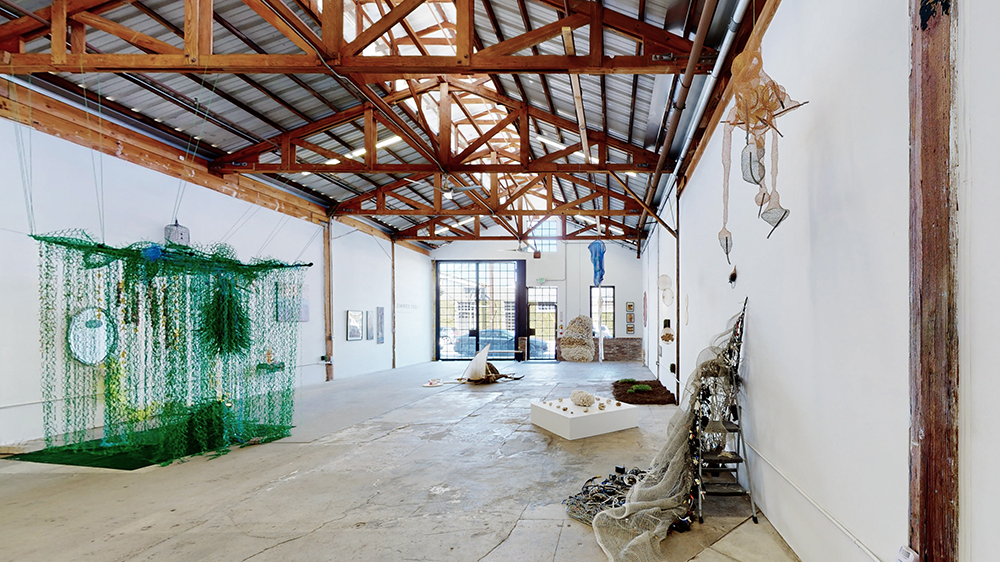Los Angeles is a city of immigrants: over 200 different languages are spoken here. Every immigrant comes to this country with an already established identity. Each has to jettison their old identities and craft new, LA-based ones. Some do so by making art.
One way to chart this process is to explore “Zimmer Frei,” an exhibition produced by Los Angeles artists who have traveled here from 13 different countries (finely curated by the Yugoslavian Snezana Saraswati Petrovic).
The artists employ media as diverse as their places of origin, from traditional painting to photography, film and computer technology. They present a wide range of formats, from single images to complex installations that invite viewer interaction. Here are a few of the standouts.
Alaïa Parhizi’s painting Sense (2022) depicts a standing human figure. It is unnaturally elongated, like a saintly figure on a Gothic Cathedral (complete with halo), or perhaps like an alien coming down to retrieve ET. Or is it a political alien who has fled another country for a chance at freedom? Carsten Bund inserts the historic precedent of portrait painting into Artificial Intelligence. He created a program that “paints” images in vibrant, expressionist colors—images that periodically coalesce into abstracted depictions of the human face. Many of the faces resemble portraits of Alexej von Jawlensky (1864–1941). The Russian-born painter spent most of his creative career in Germany, and thus serves as an éminence grise of the bicultural artists in “Zimmer Frei.”

“Zimmer Frei” exhibition installation shot.
Courtesy of Wonzimer.
Chenhung Chen uses industrial detritus (wires, cords, metal mesh, etc.) to create abstract sculptures that refer poetically to biomorphic forms (like diaphanous sea creatures) or possibly, ritual garbs (discarded gossamer robes). Her work exists in the liminal space between machine culture and vulnerable nature, even as it shuttles between her native Mandarin and adopted English.
Like Chen, Marisa Caichiolo deploys “non-art” materials, from dinner plates to tufts of grass and even locks of her own hair. She uses hair like embroidery thread to limn words and images across the shiny surface of sterling silver platters. Viewers are reminded of the way traditional women were defined by the gendered role of housewife. They gave of their very bodies to construct the physical and psychic spaces of their homes.
Snezana Saraswati Petrovic’s installation I Like Amerika and Amerika Likes Me (2023) is a ceremonial “home” inside the gallery. Strips of looped plastic dangle from a rectangular frame like tentative vines surrounding a sacred space. The plastic forms are juxtaposed with orchid leis from Hawaii. An oval mirror hangs on the wall opposite the entryway with a projected video at the level of a viewer’s face, challenging expectations about image and self-image. As with many of the artworks in “Zimmer Frei,” Petrovic’s installation continues the ongoing investigation of immigrant identity.


